| Year-round Resident | |
| Has Nested in Park |
Red-bellied Woodpeckers are year-round residents who have nested at Monticello Park.
Where to See Them in the Park
Along with the Downy Woodpecker, Red-bellied Woodpeckers are the most common woodpecker species at Monticello. They can be seen in any part of the park. They often vocalize when foraging, which makes them fairly easy to locate. Sometimes, they have nested in trees that can be seen from the bridge.
Physical Description
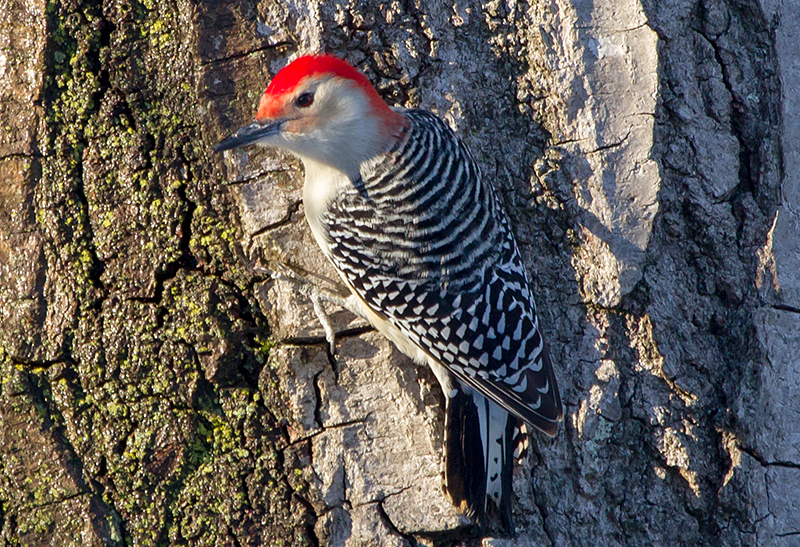
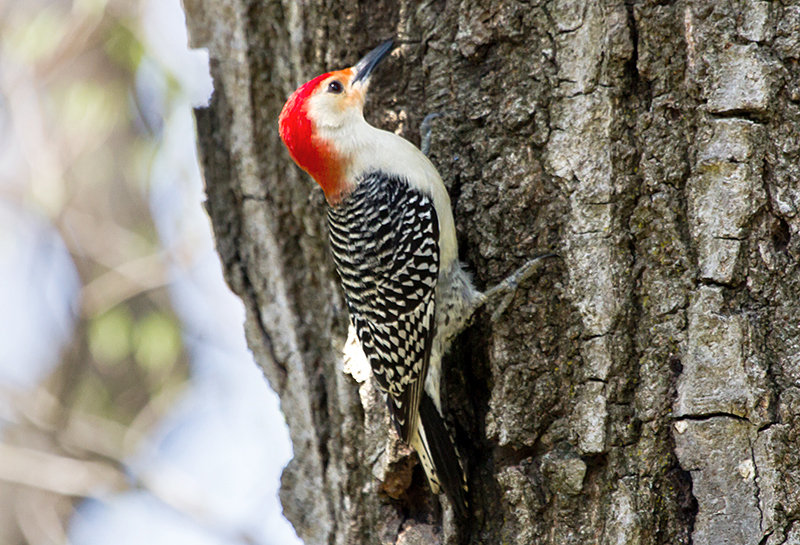
Adult male Red-bellied Woodpeckers have plumage that looks the same all year. They have a black-and-white ladder back. The crown and nape are red, which is why some people mistakenly call them Red-headed Woodpeckers. During the breeding season, males sometimes have aggressive encounters.
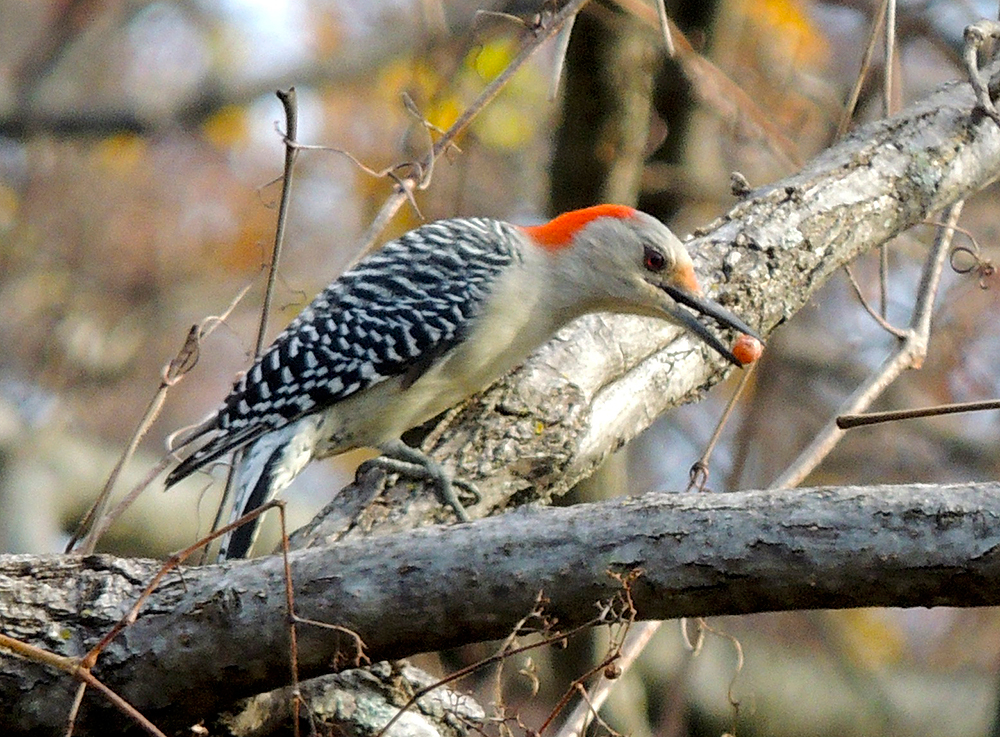
Adult females also look the same throughout the year. She looks similar to the male, but she has no red on her crown. Male and female Red-bellied Woodpeckers have zygodactyl feet, as do all species of woodpeckers. Two toes point forward, and two point back. Most bird species have four toes, with three pointing forward and one back. The zygodactyl arrangement helps woodpeckers to hold onto trees more effectively.
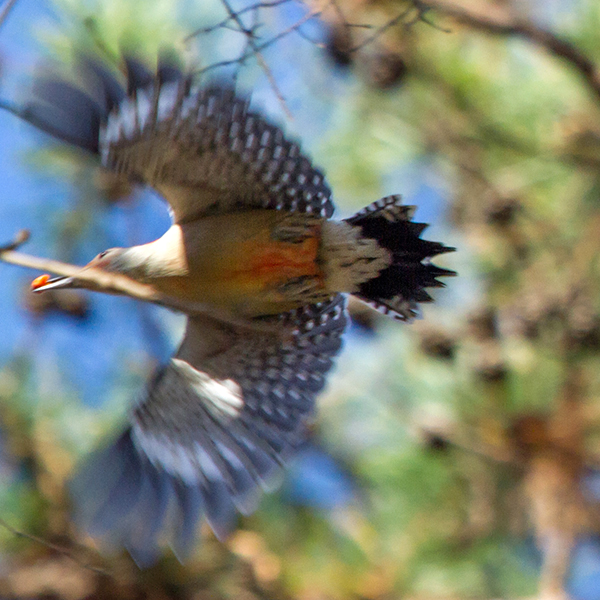
The belly of both sexes is white with an orange patch in the middle. Because woodpeckers generally have their belly against a tree, the orange patch can be difficult to see in the field. When they fly, you sometimes can more easily see the red belly that is the basis for their name. The spiky central tail feathers help them to anchor their bodies when foraging on a tree. Their tail and two strong legs function like a tripod.
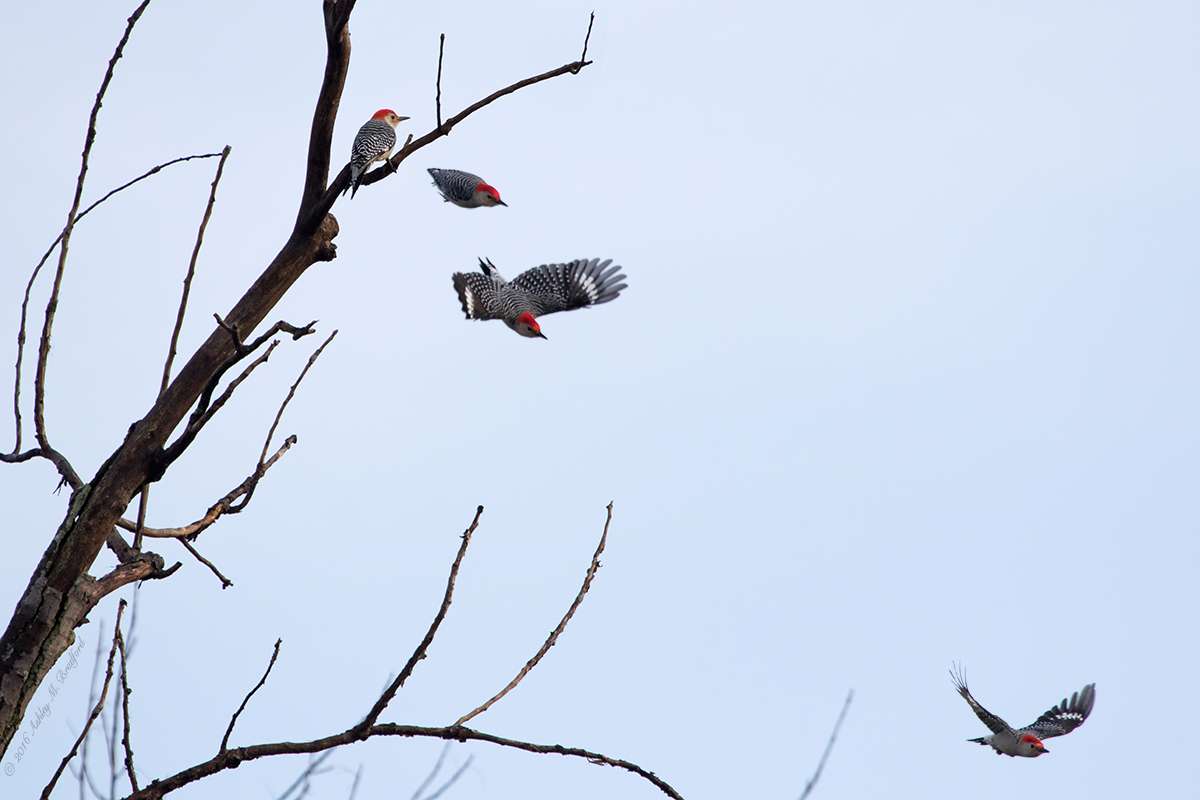
Like most other woodpecker species, Red-bellied Woodpeckers mix flaps with glides. In flight, they show white crescents near the ends of their wings, which is an important fieldmark.
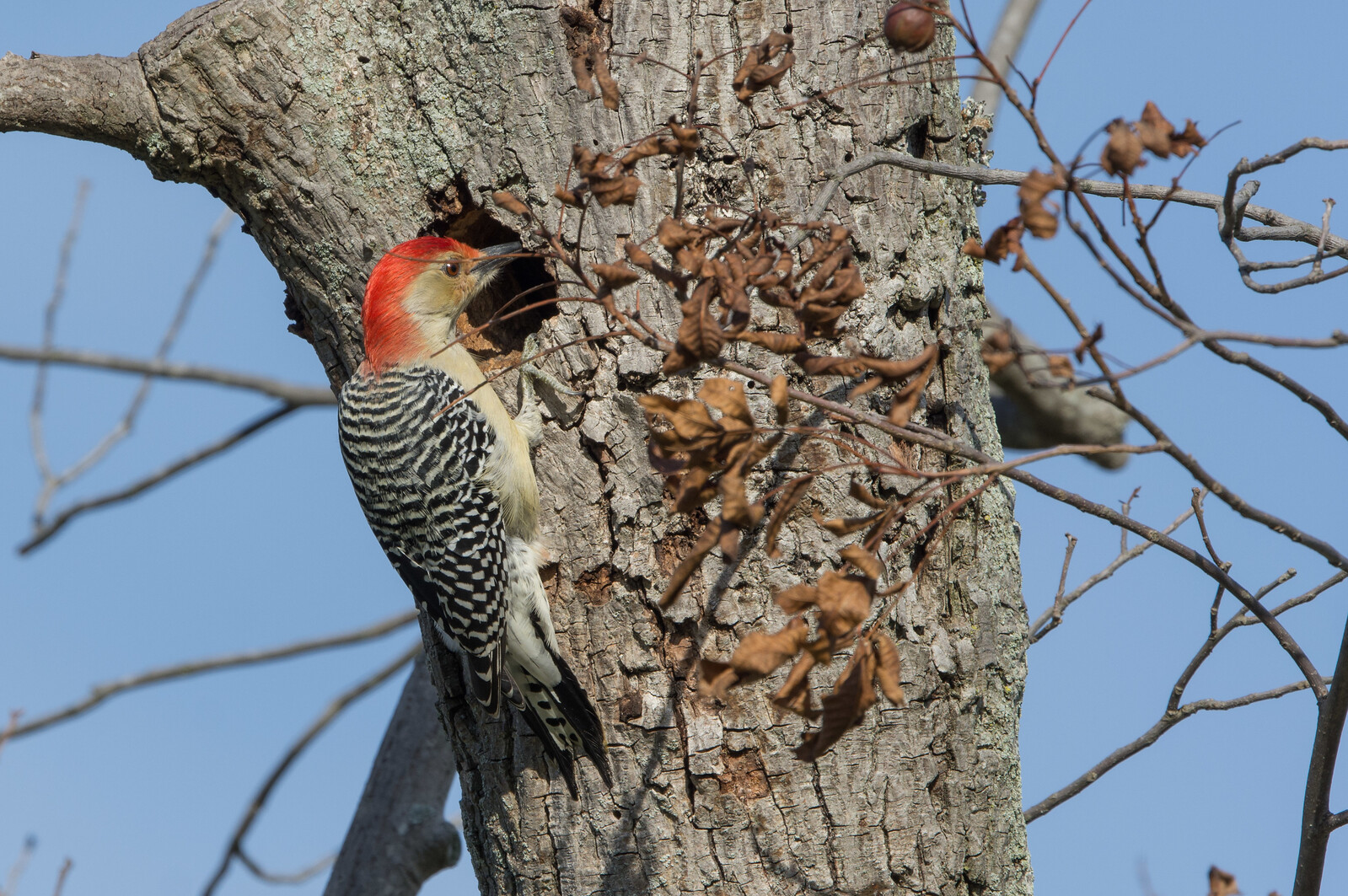
Red-bellied Woodpeckers are cavity nesters. They raise 1 to 3 broods each year, and the female lays 2 to 6 eggs in each brood. The eggs are incubated for 12 days, and the young stay in the nest hole for 24 to 27 days.

Juvenile Red-bellied Woodpeckers have duller plumage than adults. The head and neck of juveniles are mostly gray, lacking the prominent red plumage of adults.

Many juvenile Red-bellied Woodpeckers have a trace of red feathering on the top of their head, with the males likely to have more red feathering than the females. However, the sex of a juvenile Red-bellied Woodpecker can be difficult to differentiate.
Vocalizations
The call of the Red-bellied Woodpecker is a loud harsh churr, often repeated a few times. They also have a loud char vocalization, which they repeat numerous times.
Hear the vocalizations and sounds of the Red-bellied Woodpecker.
Notes

Birds sometimes have plumage abnormalities or physical deformities, which can be caused by either environmental or genetic factors. Birds with bill deformities, such as this Red-bellied Woodpecker with the extremely long upper mandible, are rarely seen, because they usually do not survive long enough for people to see them. The United Stated Geological Survey has conducted research about birds with bill deformities.
Origin of Names
Common Names: Red-bellied from the red feathers on the belly. Woodpecker because they peck wood.
Genus Name: Melanerpes means black creeper.
Species Name: Carolinus means of Carolina, which used to be a loose term for the South.
Red-bellied Woodpecker video footage
Return to the Index
